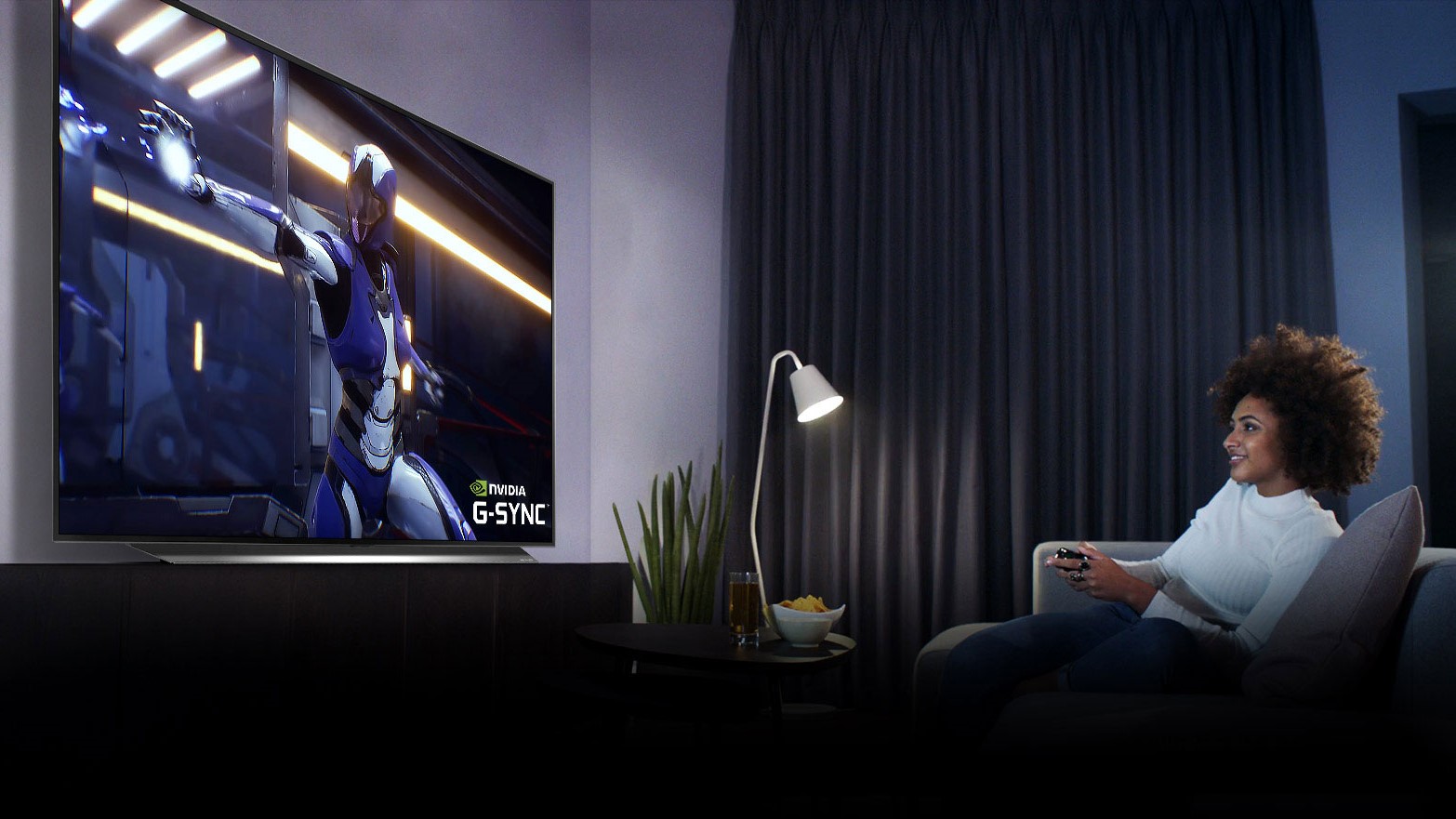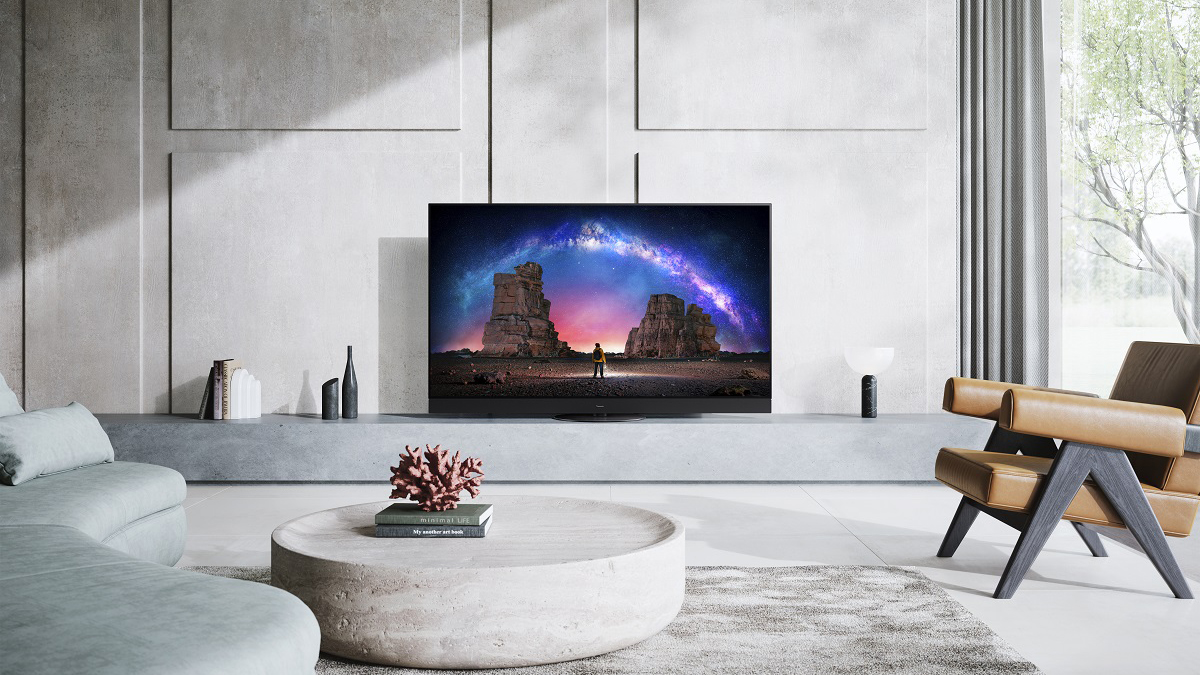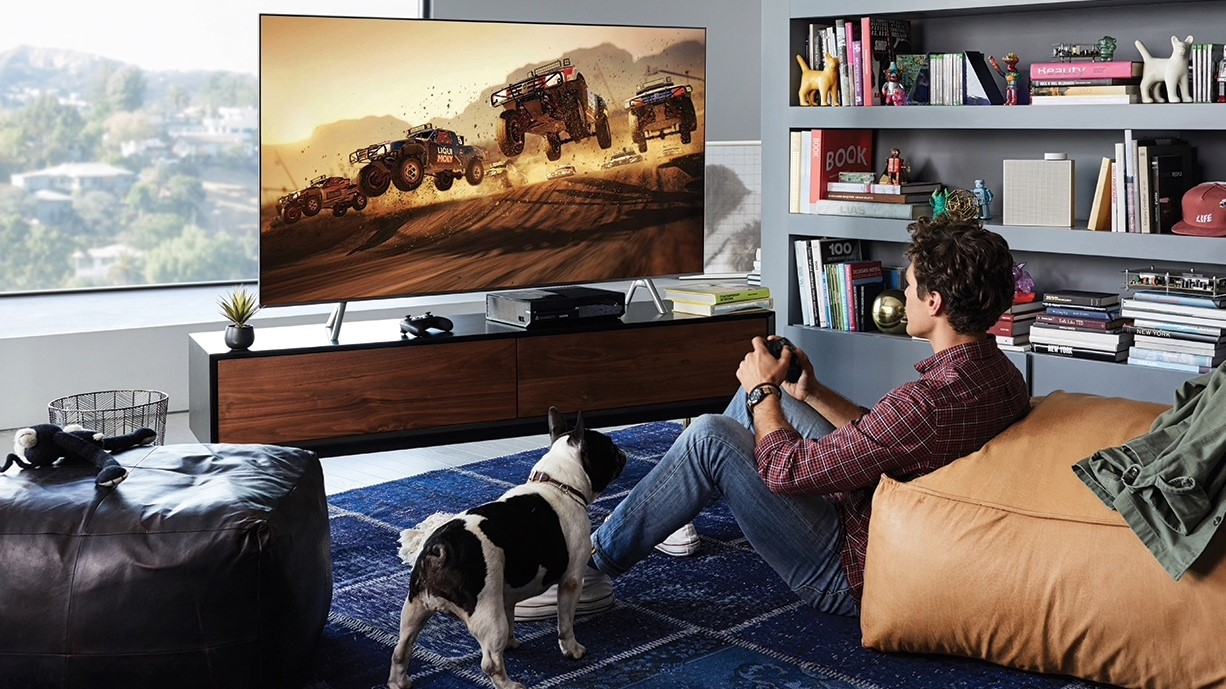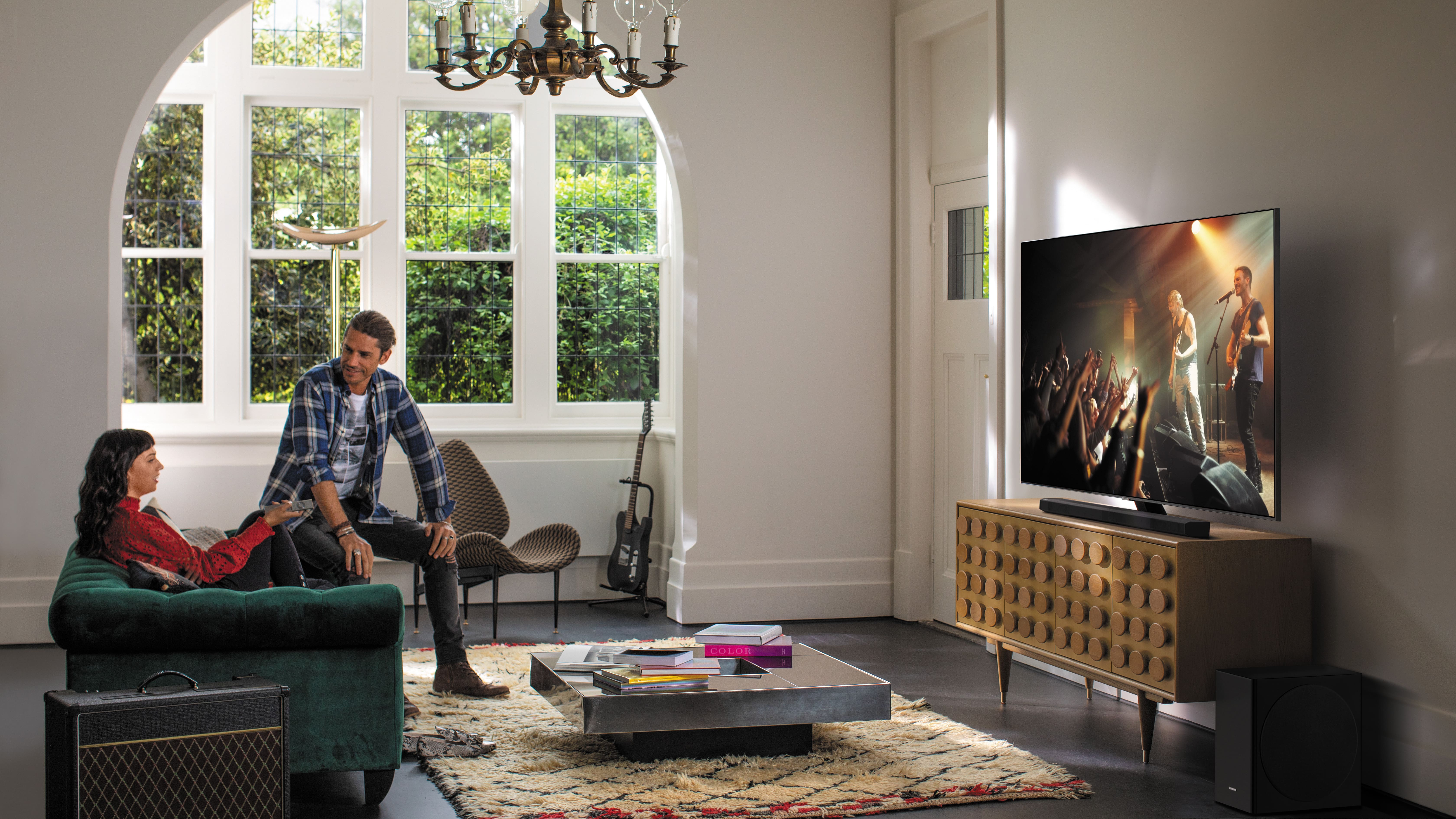Is an OLED TV right for you? Or should you choose a QLED TV instead? If you’re looking for a new television, it’s time to learn the difference between these two TV tech terms because you’re likely to see them everywhere.
There have been countless TV tech advances over the years. This is fantastic news for everyone. We now have fantastic colours, excellent images and an overall much better quality experience when we watch TV shows, movies and play games than ever before.
But it can be difficult to stay on top of all the new tech terms, find out what’s new and figure out what’s worth caring about and what’s just hype. The question of which is better: OLED vs QLED TVs has always been important – and, frustratingly, there’s no clear winner.
That’s right, neither OLED or QLED is definitively better than the other. Instead, it’s a case of choosing which option is the right one for not only you and your viewing preferences, but the space you have available in your home and your budget.
So where do you begin? This is more about what makes both a premium picture and a top-quality watching experience – which are often subjective. For example, do you prefer the self-emissive delights of OLED? Or the quantum dot contrast and high brightness that comes with QLED tech? What you prefer might not work for me and vice-versa.
The first step is understanding the fundamental differences between the two TV panel technologies before you learn how you could pick one from the other. Even for the most knowledgeable tech types, this can be a challenge.
That's why we’ve created this guide. We simplify the jargon and ensure you have all of the information you need when you’re next on the lookout for a new TV, whether you're hoping to buy a huge new 83-inch OLED TV for your living room or a gaming TV that’ll sit over your bed. We’ll also help you answer the question: what is OLED? As well as discovering which TV brands offer both of these panel technologies.
- Get the best 4K Blu-ray players for your new TV
Many of the biggest and best TV tech brands around, including Sony, LG, Philips, Panasonic, Vizio and Huawei, are pushing their OLED TVs.
LG has even recently launched a more advanced kind of panel tech called OLED Evo, which improves manufacturing methods to increase the brightness output possible in an OLED display.
OLED is, in a big way, the most widely-supported premium panel tech you will find in TVs right now. The good news is, it’s getting cheaper – even if QLED has the advantage of being supported by Samsung, which is the world's biggest TV manufacturer right now.
You might assume QLED is just like LCD by another name, having stemmed from a rebranding of Samsung's SUHD (Super UHD) sets a few years ago. The constantly expanding range could be said to undervalue the QLED name as well, though QLED still offers the best of Samsung's display technology, with a quantum filter that enhances contrast beyond what you'd usually expect from an LCD.
Although you'll get the likes of TCL and Hisense pushing 'QLED' branded sets too, so there's clearly more to it than Samsung's marketing team.
But which of the two, QLED and QLED, is the best? We’ve collected together the most important details you need to know about both QLED and OLED technologies. Including what they are, how they differ, and which TV makers support them. Read on for every OLED vs QLED question answered.

OLED vs QLED: the case for organic LED
Pros:
Lighter and thinner (2.57mm)
Self-emissive pixels
More convincing blacks
Faster refresh rate (0.001ms)
Judder and blur-free
Cons:
Limited screen sizes: 48, 55, 65, 77, 83, 88-inch
Muted brightness (up to 1,000nits)
Expensive
We can summarise the OLED vs QLED battle in one sentence: QLED is a tweak of existing LCD technology, while OLED is a new technology altogether.
OLED – which stands for Organic Light Emitting Diode – uses a carbon-based film between two conductors that emits its own light when an electric current is passed through.
Since the pixels themselves are producing the light, when they need to be black they get switched off completely. That means no chunky LCD backlight, remarkably realistic blacks, so-called 'infinite' contrast, lightning-quick refresh rates and a muted brightness ideal for movies – if dim by LED standards. Watching an OLED TV for the first time will give you that rare feeling of having just witnessed something really very special.
OLED has been stuck at only a few TV sizes for the past few years – given the smaller scale of its manufacturing compared to LED – though LG has now expanded into 48-inch OLEDs, with 83-inch and 42-inch panels in the works for 2021.
New light sensors installed in Panasonic TVs and LG TVs are also improving how well OLEDs manage in bright environments, even if they're not used across the board yet.
Read more: What is OLED?
QLED vs OLED: the case for quantum dots
Pros:
Brilliant whites
Ultra-bright (up to 2,000 nits)
Variety of screen sizes between 32 and 98-inch
Cons:
Not as slim (25.4mm)
Overly bright
Less convincing blacks
Slower refresh rate
QLED isn't a new TV technology as much as it is a rebrand. Until 2017, Samsung called its flagship TVs SUHD, but that wasn't working as well as it hoped, so it's now called them QLED – which stands for Quantum-dot Light Emitting Diode.
Yes, it sounds very, very similar to OLED, which is confusing – especially when you throw in LG's new QNED range. What's the deal with these names, people?
Regardless, QLED is very distinct from OLED, in that it isn't self-emissive, and still makes use of a backlight. What makes it 'quantum', according to Samsung's marketing arm, is that it uses a quantum dot colour filter in front of its LCD backlight, which improves contrast and color vibrance. (Technically, they should be called QLCD-LEDs, so we can't complain too much about its existing name.)
So, really, it's not a next-gen display technology at all, just a tweak to LCD TV tech. However, that doesn't mean it's not impressive – it really is very good.
As of 2021, Samsung has also revamped its QLED range as 'Neo QLED', marking the implementation of a MiniLED backlight, which multiplies the number of LEDs used for more precise brightness control – and with the side effect of widening viewing angles and upping potential brightness, as well as reducing blooming.
Read more: What is QLED?
Which brands support OLED & QLED?
The battle between OLED and QLED is a story about branding, and it's also about a South Korean rivalry. Every single OLED panel found inside every single OLED TV is made by LG Displays, and every single QLED panel is made by Samsung.
Team OLED:
Most TV brands are lining-up behind OLED, believing it to be the superior technology for picture quality. It's hard to disagree, but despite LG, Sony, Panasonic, TP-Vision (under the Philips brand in the UK), Loewe, Bang & Olufsen, Skyworth, and ChangHong all now selling OLED TVs, they do tend to be very expensive. The maker LG Display just can't produce enough OLED panels fast enough to bring them in at a lower cost, which is making OLED TVs seem like a top-tier premium TV technology only.
This is changing, with new and smaller sizes – last year saw the arrival of 48-inch OLEDs, and we should be seeing 42-inch sizes come in 2021 (as well as a new 83-inch size). Increased production should help to drop prices too – though Hisense has already ditched the technology, after a poorly-performing Hisense O8B OLED that didn't quite make the best case for the technology.
Team QLED:
Samsung abandoned its efforts to make OLED TVs in 2014 due to low production yields, and only started talking about QLED again back in 2017. It's now trying to popularize the technology by getting other companies involved.
Though the brands behind QLED are fewer, they're quickly getting unionised. Samsung, Hisense and TCL banded together under the QLED Alliance back in 2017, in order to advance QLED development – and shift more QLED sets in the world's biggest TV market, China.

OLED vs QLED: what's best for gamers?
If you're mainly interested in a television that's good for gaming, we'd encourage you to focus on different criteria than OLED vs QLED.
With the PS5 and Xbox Series X coming this year too, you may want to futureproof with a set carrying HDMI 2.1 ports that can carry 8K video from consoles (at 60Hz), as well as 4K video at 120Hz. Low input lag isn't always specified on TV product pages, but we recommend keeping an eye out for it nonetheless – or skipping to our best gaming TVs guide. This article on PS5-ready TVs runs through other specs and points of interest for buying a gaming TV too.
Certainly, OLED sets will be best for achieving natural contrast, and help make cinematic games – whether the intergalactic horizons of Halo Infinite or the lush forestation in Shadow of the Tomb Raider – look truly breathtaking. LG's OLED TVs come with Nvidia G-Sync to help smooth out gameplay onscreen too.
However, QLEDs go a lot brighter, and may be better for practical visibility in the games you're playing, and drawing out environments and in-game objects clearly. It may depend on what you're playing – but getting a set with low input lag, VRR (variable refresh rate), or an HMDI 2.1 port, will be more important than the underly panel technology.

OLED vs QLED: which should you choose?
If you're after a high-end 55-inch TV, buy an OLED TV, since both technologies are roughly the same price at that size. However, if you have something else on your mind – a smaller screen size and/or smaller budget to play with – it's more complicated that that.
Since LG Displays makes all OLEDs and Samsung all QLEDs, you might think that it's possible to draw grand conclusions about which tech is better with – for example – games, and which is better with movies. That's not the case. As with all consumer electronics products, it depends on (a) how much you spend, and (b) which brand you opt for.
Samsung's flagship QLED is the Samsung Q950TS 8K QLED TV, while the LG CX OLED best extols OLED's virtues. Check out our reviews of these two sets if you want to see the best both technologies have to offer – or wait to see what incoming sets for 2020 could replace them.
For cheaper televisions – under $1,000 / £1,000 / AU$1,500 – you'll have to stick with an LED or QLED television for now, as OLEDs simply aren't priced that cheaply yet. But you can get the Samsung Q60R QLED, for example, for only a few hundred dollars / pounds at its smallest 43-inch size.
There are plenty new Samsung TVs on the way for 2021, alongside a new slate of OLEDs from LG, Panasonic, Sony, and Philips – so there's plenty of opportunity for these stakes to change in the coming year.
- Samsung vs LG TV: which TV brand is for you?

The future for OLED vs QLED
Regardless of our buying advice for you today, it remains the case that things may shake up a lot in the coming years.
There are plans afoot to develop QLED sets that ditch the LCD backlight to become self-emissive, in a move that could blend the advantages of both OLED and QLED technologies and spell trouble for OLED panel manufacturers like LG Display.
“True QLED sets are self-emissive, as with OLED sets, and are not yet in the market, but are anticipated to be so in the coming years,” says David Tett, Market Analyst at Futuresource Consulting. “When it is released it is expected to provide the strongest challenge to OLED yet, as it brings many of the same benefits as OLED, with few potential drawbacks.”
There were initially rumors for Samsung to release these so-called 'true' QLED sets in 2020, which now seems far further off, though we continue to hear talk of Samsung working on some kind of OLED-QLED hybrid.
If the future is bright for QLED, those behind OLED panels are hoping that one of the technology's native characteristics, flexibility, wins the day. “OLED sets can offer new audio solutions that see the panel vibrate to create sound and could also offer new form factors, both due to their flexible nature of the panel,” says Tett. This is nowhere clearer than with LG's incoming rollable OLED, the LG Signature Series OLED R, which is able to curl up into the television's base.
For now it's OLED that takes the crown for the best – and most expensive – TV tech around, but unless LG Display can up its production rate and create more screen sizes – as it's beginning to do – the immediate future of the mainstream TV could still belong to QLED.
- For our top TV recommendations, check out our guide to the best 4K TVs
- Check out the latest QLED and OLED TV deals and sales
Jamie Carter made original contributions to this article.
source https://www.techradar.com/news/oled-vs-qled/
Leave a Reply